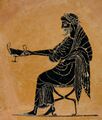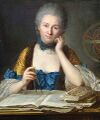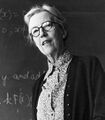Template:Selected anniversaries/December 17: Difference between revisions
No edit summary |
No edit summary |
||
| Line 49: | Line 49: | ||
||1961 – Niterói circus fire: Fire breaks out during a performance by the Gran Circus Norte-Americano in the city of Niterói, Rio de Janeiro, Brazil, killing more than 500. | ||1961 – Niterói circus fire: Fire breaks out during a performance by the Gran Circus Norte-Americano in the city of Niterói, Rio de Janeiro, Brazil, killing more than 500. | ||
File:Nathan Rosen.jpg|link=Nathan Rosen (nonfiction)|1963: Physicist and crime-fighter [[Nathan Rosen (nonfiction)|Nathan Rosen]] discovers a new form of Einstein–Rosen bridge which detects and prevents [[crimes against physical constants]]. | |||
||1964 – Victor Francis Hess, Austrian-American physicist and academic, Nobel Prize laureate (b. 1883) | ||1964 – Victor Francis Hess, Austrian-American physicist and academic, Nobel Prize laureate (b. 1883) | ||
| Line 54: | Line 56: | ||
||1969 – Project Blue Book: The United States Air Force closes its study of UFOs. | ||1969 – Project Blue Book: The United States Air Force closes its study of UFOs. | ||
File:Cherenkov high-energy literature test reactor.jpg|link=High-energy literature|1977: [[High-energy literature]] used during [[Saturnalia (nonfiction)|Saturnalia]] for the first time. | |File:Cherenkov high-energy literature test reactor.jpg|link=High-energy literature|1977: [[High-energy literature]] used during [[Saturnalia (nonfiction)|Saturnalia]] for the first time. | ||
||Jürgen Kurt Moser (d. December 17, 1999) was an award-winning, German-American mathematician, honored for work spanning over 4 decades, including Hamiltonian dynamical systems and partial differential equations. | ||Jürgen Kurt Moser (d. December 17, 1999) was an award-winning, German-American mathematician, honored for work spanning over 4 decades, including Hamiltonian dynamical systems and partial differential equations. | ||
Revision as of 18:00, 21 March 2018
498 BC: Dionysus gives speech which anticipates the coming of Saturnalia.
497 BC: The first Saturnalia festival celebrated in ancient Rome.
1706: Mathematician and physicist Émilie du Châtelet born. She will translate and comment upon on Isaac Newton's Principia Mathematica.
1842: Mathematician and academic Marius Sophus Lie born. He will largely create the theory of continuous symmetry and apply it to the study of geometry and differential equations.
1855: Set theorist and crime-fighter John Venn devotes himself to fighting crimes against mathematical constants.
1900: Mathematician and academic Mary Cartwright born. She will do pioneering work in what will later be called chaos theory.
1907: Lord Kelvin dies. He did much to unify the emerging discipline of physics in its modern form.
1938: Physicist Otto Hahn discovers the nuclear fission of the heavy element uranium, the scientific and technological basis of nuclear energy.
1963: Physicist and crime-fighter Nathan Rosen discovers a new form of Einstein–Rosen bridge which detects and prevents crimes against physical constants.








